The Dawn Wall was such an unforeseen, earth-shattering event within our sport that climbing history ought to be divided thusly:
Before Dawn Wall and After Dawn Wall.
BDW time is an era in which one’s memory of climbing may be colored in such a way that it renders our sport humble and esoteric, as if climbing itself were a musician whom you loved seeing in some underground nightclub alongside scant likeminded souls.
All time ADW is an experience of finding yourself sharing that soulful music and its accompanying culture with a far larger group. Nothing about climbing ADW has really changed … but it’s also not the same and it never will be again.
Climbing is having its moment right now. And the Dawn Wall—by which I refer not specifically to the route on El Capitan but rather to the virality of global media that emanated from Tommy Caldwell and Kevin Jorgeson’s 2015 redpoint, as if their epic ascent were some kind of second moon landing—is easily the most conspicuous example of this strange era.
Forces had been building to thrust climbing into a more mainstream stature for decades, but the Dawn Wall was the atomic cataclysm that ultimately pushed our once-niche sport over the line and into the public consciousness in a way that no Everest tragedy or nationalistic mountaineering conquest ever had before. People were paying attention to climbing not simply as a proxy for the hubristic or adrenalized ambitions of climbers, but rather they were trying to understand “free climbing,” “beta,” “pitches,” etc.—all within the context of witnessing a true adventure up a striking and well-known monolith of granite.

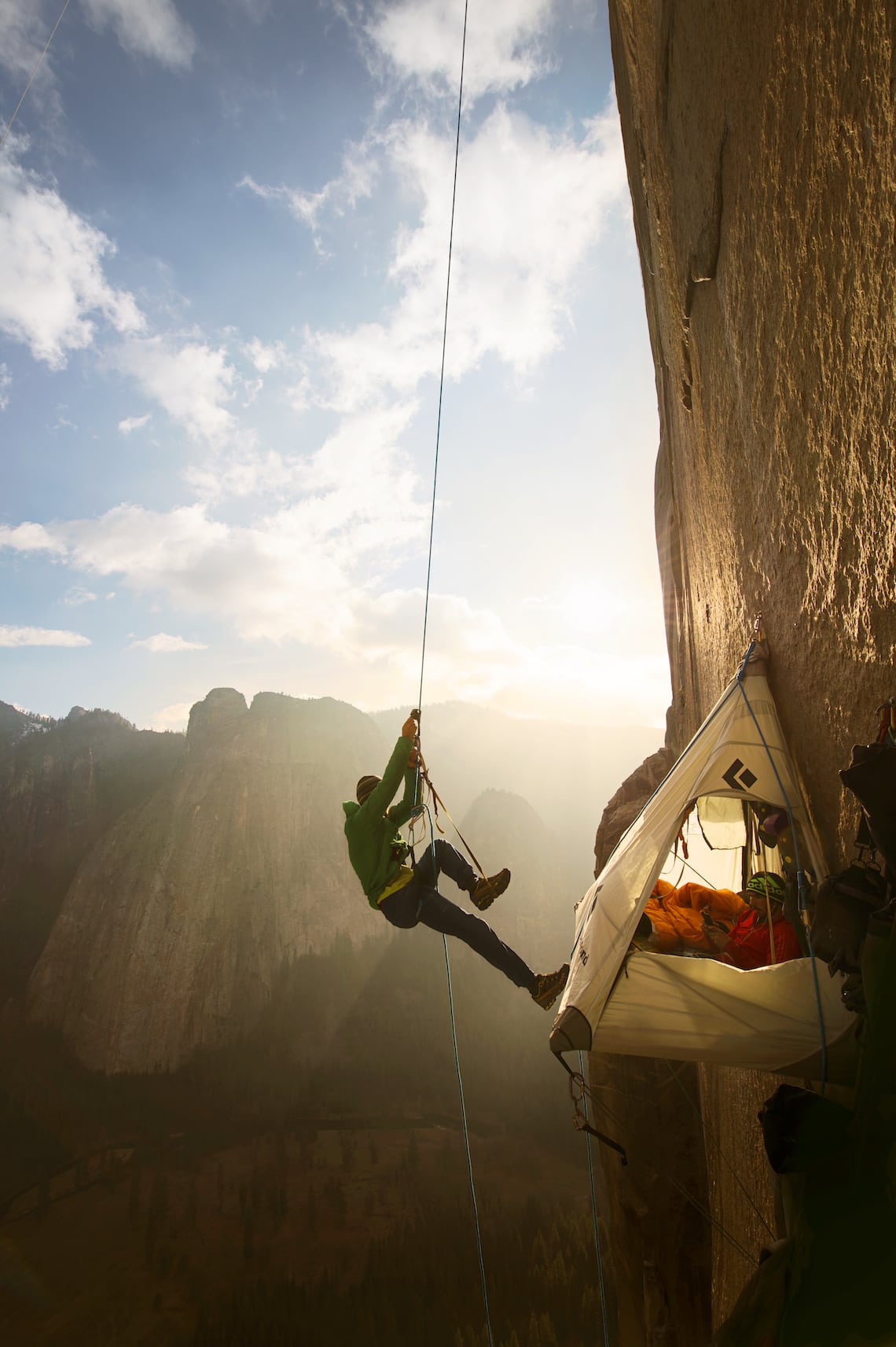
Since the Dawn Wall media storm, I’ve wondered about the lasting effect of this curious phenomenon. Was the Dawn Wall a freak event … or a harbinger of more to come?
In the Dawn Wall’s aftermath, several savvy climbers used their impressive marketing skills to ride the Dawn Wall’s coattails, so to speak, and managed to get the media’s obtuse spotlight to shine upon them for a minute. But these memetic attempts failed to recreate the buzz that made the Dawn Wall the Dawn Wall. There was no sense of astonished, genuine wonder that appeared to be so potent among followers of Tommy and Kevin’s drama. The Dawn Wall, it seems, was more freak event than precedent.
So, why did the Dawn Wall become the Dawn Wall? What did people actually find so uniquely interesting about it? These are questions that, in many ways, have eluded satisfactory answers.
Read more:
Tommy Caldwell: “The Day I Sent Salathe Wall in a Day”
Daily Stoke: Come Prepared Like Tommy Caldwell
Until, perhaps, now. Three years after the Dawn Wall, The Dawn Wall, the film, premiered last weekend at SXSW, which I was lucky enough to attend. The film surpassed my high expectations by an exponential degree. Not only was The Dawn Wall the best climbing film that I’ve seen, it was one of the best films that I’ve seen.
In the course of this 100-minute movie, the filmmakers managed, in such a beautiful and emotional way, to distill and capture exactly what made the Dawn Wall a story that transcends climbing without ever shying away from its abstruse, nuanced details. In doing so they, they captured precisely what core climbers already know and love about climbing, while dishing up a real-life story about the kind of real-life hero that, I’d argue, our society needs now more than ever.
Heroism and Masculinity in The Dawn Wall
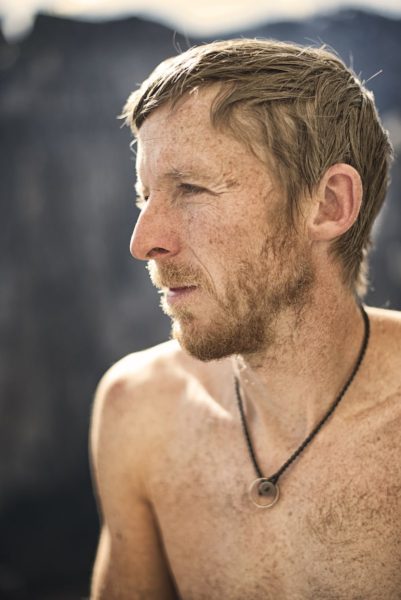
Tommy Caldwell is the film’s star, and his story as a climber is woven throughout the story of the Dawn Wall’s climactic ascent. The film dives into the incredible moments of Tommy’s life thus far, from his experience surviving a kidnapping by terrorists in Kyrgyzstan, to sawing off his finger on a table saw and being told he’d never again climb, to his marriage to (and eventual divorce from) Beth Rodden. Having followed Tommy’s career since he was a teenager and being very much aware of the details of each of these events, I nevertheless found myself genuinely stunned by the retelling of these stories in only the way that seeing them presented on the big screen could have accomplished. What an incredible life!
Tommy’s growth as a character is framed—truthfully, I believe—by his inauspicious beginning as a weak and wimpy kid. His father, meanwhile, is a semi-pro bodybuilder and hardcore climber dude who promptly starts whipping his boy into shape by teaching him how to suffer and endure adversity in Colorado’s mountains. They take the kind of trips that, these days, might warrant child-protective services, as the film jokes with only a hint of sarcasm.
“My dad is, like, the symbol of a man,” Tommy says in the film as we see an image of Mike, his dad, wearing a banana hammock and flexing like a Schwarzenegger (eliciting the first of many audience laughs).
This theme of defining manhood is a subtle but consistent thread running through the narrative. We see Tommy come of age, discover first love, and ultimately have his heart broken—the impetus for launching his campaign to establish the Dawn Wall. We see him lose his childhood innocence in Kyrgyzstan when he is captured and ultimately does what no one else was willing to do and push the armed captor off a cliff, thereby committing what Tommy and everyone else believed to be murder. (Strangely, the guy lived, it was later learned.)
We see Tommy told by an authority figure, the hospital doctor, that he’d never climb again after losing his finger. He subsequently proves that guy wrong.
We see Tommy dive into a seven-year obsession with the Dawn Wall—and right when his own success is at his fingertips, he decides that his send would be diminished if his partner didn’t join him as an equal on the summit, too. These details, of course, aren’t spoiler alerts if you know anything about climbing, Tommy, and/or followed the Dawn Wall drama. Yet the film manages to recast and repackage these stories in a way that feels like you may as well be hearing and seeing them for the first time.
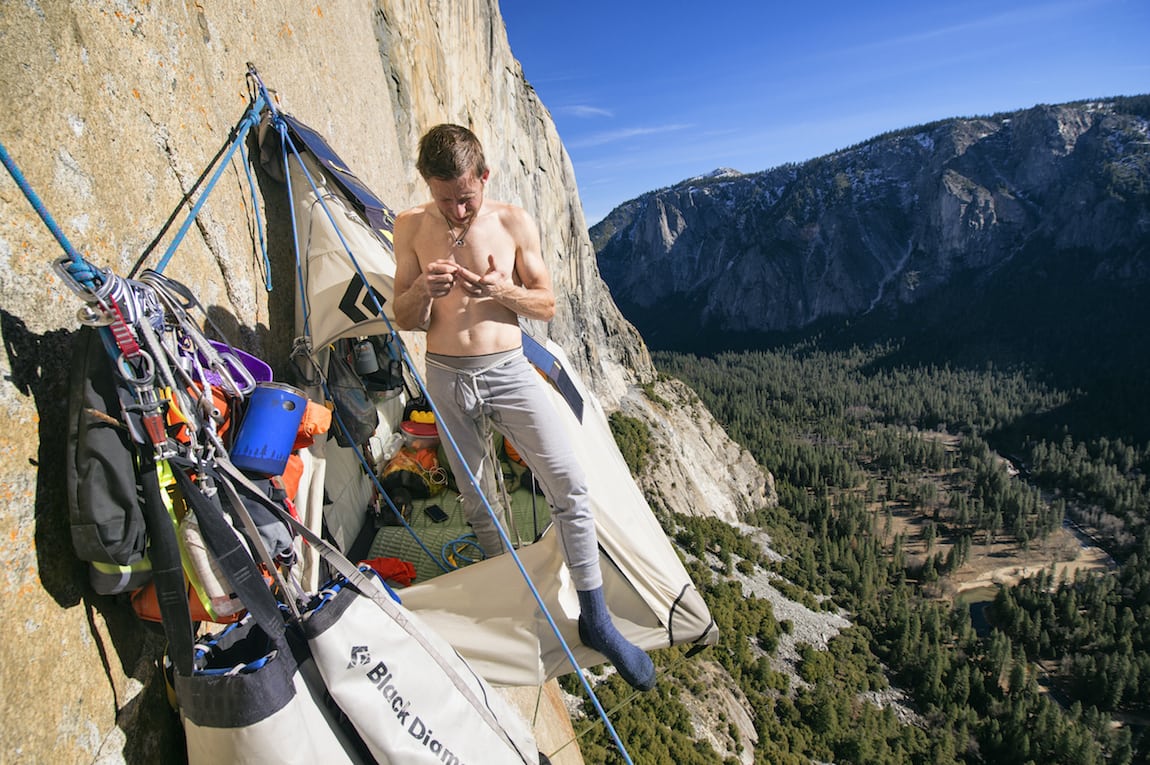
Ultimately, this film renders a definition of manhood through Tommy and his life story. What’s so striking about this is it doesn’t end up looking anything like a superficial muscle-bound hulk or other depictions of super-heroism and manhood that we typically see depicted in Hollywood.
The Dawn Wall is a portrait of an understated guy with an incredible gift not only for climbing but more importantly, for insisting on doing the right thing.
What made this theme stand out to me is the context in which we find ourselves in 2018, in which men are either the villains behind mass shootings or the predators behind #MeToo. These are important issues and necessary conversations that we need to be having—but as a corollary to this focus of late, it seems as if we are also left with few male role models worth honoring these days.
In a Twitter thread, the comedian/actor Michael Ian Black made some very astute comments on this topic in the wake of the latest school shooting. He wrote:
“The last 50 years redefined womanhood: women were taught they can be anything. No commensurate movement for men who are still generally locked into the same rigid, outdated model of masculinity and it’s killing us.”
The Dawn Wall film, one might argue, presents a new model of masculinity and heroism through Tommy Caldwell that transcends muscle-bound facades of manhood and power in a way that no Hollywood production ever could. Time and time again, Tommy reveals himself to be a guy who is willing to commit the ultimate acts of sacrifice in the name of helping those around him. He is open to expressions of something resembling platonic love—as we see in one sweet moment in which he tells Kevin that he couldn’t imagine continuing forward without him by his side. Despite broken hearts and lost fingers (well, one finger), he seemingly avoids falling into the normal misogynistic and self-defeating traps. He rises above but stays humble. Ultimately, he’s rewarded—with love, with a family, with a lifelong friend, and with the route and adventure of a lifetime.
By proxy, these virtues percolate down through the sport of climbing. It’s what makes climbing and its lifestyle such a necessary story today—because climbing is so not what you see everywhere else. In climbing, we see a tribe that chooses minimalism over wealth. We see examples of how climbers can place the welfare and goals of our partners over the delusions of our own egoistic, self-made grandeur. Consider how many ways these virtues alone depart not just from Hollywood but from every other form of celebrity, in sports or otherwise. (Clearly, this isn’t going to be a movie Trump will like or Tweet about, which is precisely the point).
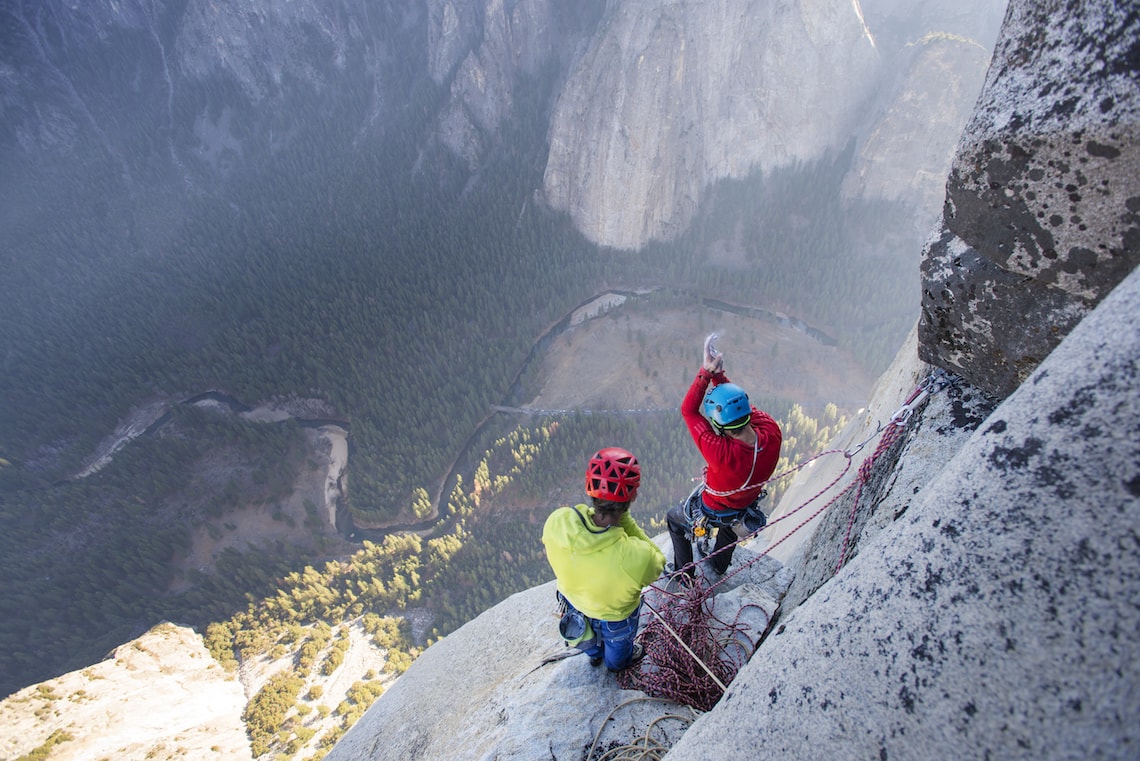
What makes The Dawn Wall film such a success is that this is a story that couldn’t have ever been scripted in Hollywood. This is the story of a remarkable real-life hero doing a remarkable real-world thing. Peel away all the media and fanfare that made the Dawn Wall the Dawn Wall, and what I see is a story about everything that’s great about climbing.
Congrats to all of my friends who worked so hard to make this film such a success. In particular, Josh Lowell, Brett Lowell, Peter Mortimer, and Corey Rich, whose photos were used in this piece. Check out The Dawn Wall website for information about how this film will be distributed and where you will be able to see it.

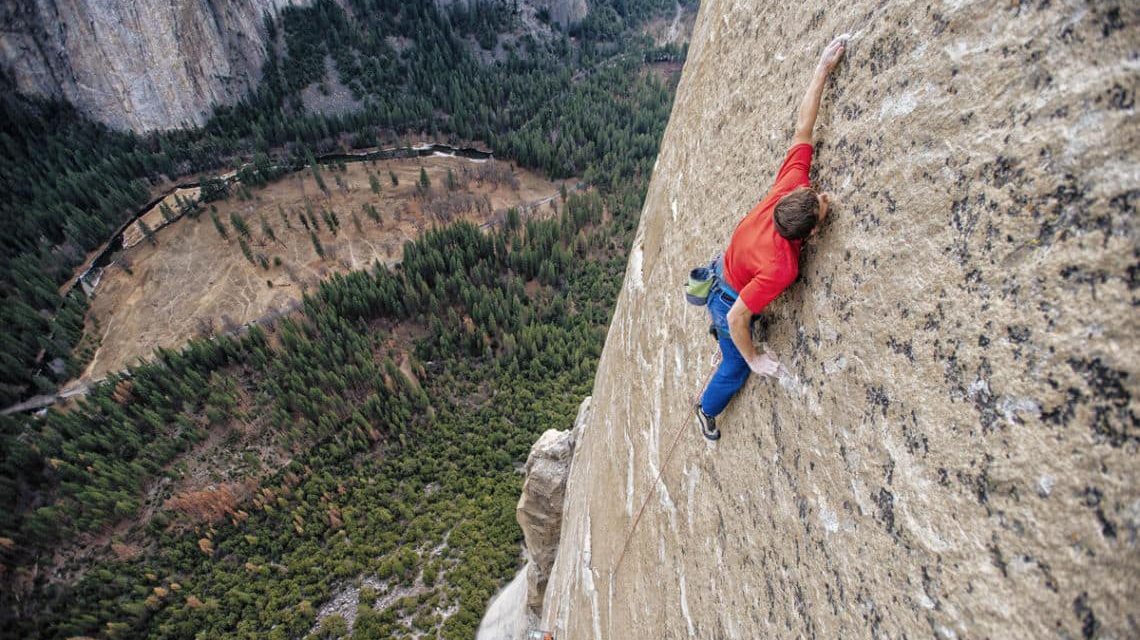
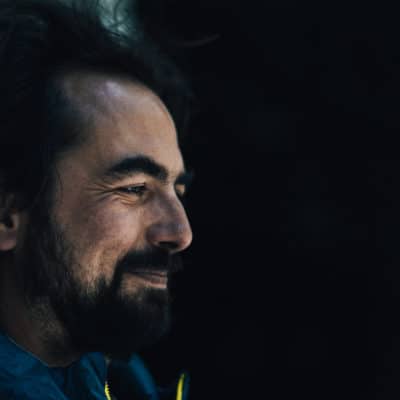

Honorable role models are especially hard to find these days and its truly a gift to be a part of a community where one can find them, especially of the highest caliber. I would also like to recognize Brett Lowell in experiencing a close shave with death while filming due to the vicious actions of an individual who set in motion of chain of events that culminated with a coffin block hurdling at him and missing him by inches near the top. Brett and the rest of Big Up deserve massive props for sticking with the project and being unsung heroes, not to mention the rest of the support crew. It was a team effort led by the transcendent bossman TC. Thanks boys for being the best while also being so incredibly humble.
Thanks for this comment. That story about Brett’s close call still makes my blood boil
Very excited to see the movie when it releases to a general audience. From your review, Andrew, it sounds like a reprisal of “The Push.” That was one of the best climbing books ever written… a lot of people comment on how talented a climber Tommy is, but few comment on what a gifted writer/speaker he is.
Looking forward to another few years of waiting around for this to come out! I bet you by the time this film is released for wider viewing, the Dawn Wall will probably have been repeated, The Nose done in under 2 hours, the triple free climbed in a day, and (unlikely) but i’ll bet El Cap will have even been free-soloed too.
I only just saw the Dawn Wall, which in my opinion included some good climbing footage. Although my comment isn’t exactly timely I’d still like to respond to this article’s astonishing claim that the Dawn Wall presents “a new model of masculinity”. Before I continue, I should say that I don’t personally know Tommy or the other characters in the film. I’m sure they are lovely people IRL, but for me they are necessarily just characters and in what follows I don’t mean any offence to real people.
So let’s assess this “new model of masculinity” claim against the story the film actually tells, which is as follows: (1) Tommy’s “symbol of a man” father determines to make a man of him. (2) Tommy becomes a man by: (a) winning a sporting contest; (b) successfully courting Beth, a conventionally attractive blonde; (c) killing a man who has some kind of problem with the American Way of Life; and (d) because this is America – discussing (a) to (c) on national television. (3) Tommy cuts his finger off, a castration image that a Freudian would find very pertinent to this narrative. (4) Beth leaves Tommy. (5) Tommy responds to this setback with the emotional maturity that you would expect from a pro climber and spends the next 6 years of his life on the Dawn Wall. (6) Tommy “frees” the Dawn Wall by climbing around the crux dyno, an evasion for which an amateur climber would be justly pilloried. (7) At the film’s dramatic and emotional climax, Tommy agrees to belay his partner across the hard traverse, a common courtesy if you’re an amateur but apparently “doing the right thing” if you’re a pro. (8) Tommy briefly returns to his wife, who (in what I think we can agree does not exactly represent a new model of femininity) dutifully cared for their young son while Tommy had his big adventure. (9). Under the gaze of his neglected wife, Tommy’s son clambers over some rocks and the cycle of intergenerational trauma starts from the beginning.
If this is the best story the climbing community can tell about masculinity, or for that matter about climbing, we have a very long way to go.
I only just saw the Dawn Wall, which in my opinion included some good climbing footage. Although my comment isn’t exactly timely I’d still like to respond to this article’s astonishing claim that the Dawn Wall presents “a new model of masculinity”. Before I continue, I should say that I don’t personally know Tommy or the other characters in the film. I’m sure they are lovely people IRL, but for me they are necessarily just characters and in what follows I don’t mean any offence to real people.
So let’s assess this “new model of masculinity” claim against the story the film actually tells, which is as follows: (1) Tommy’s “symbol of a man” father determines to make a man of him. (2) Tommy becomes a man by: (a) winning a sporting contest; (b) successfully courting Beth, a conventionally attractive blonde; (c) killing a man who has some kind of problem with the American Way of Life; and (d) because this is America – discussing (a) to (c) on national television. (3) Tommy cuts his finger off, a castration image that a Freudian would find very pertinent to this narrative. (4) Beth leaves Tommy. (5) Tommy responds to this setback with the emotional maturity that you would expect from a pro climber and spends the next 6 years of his life on the Dawn Wall. (6) Tommy “frees” the Dawn Wall by climbing around the crux dyno, an evasion for which an amateur climber would be justly pilloried. (7) At the film’s dramatic and emotional climax, Tommy agrees to belay his partner across the hard traverse, a common courtesy if you’re an amateur but apparently “doing the right thing” if you’re a pro. (8) Tommy briefly returns to his wife, who (in what I think we can agree does not exactly represent a new model of femininity) dutifully cared for their young son while Tommy had his big adventure. (9). Under the gaze of his neglected wife, Tommy’s son clambers over some rocks and the cycle of intergenerational trauma starts from the beginning.
If this is the best story the climbing community can tell about masculinity, or for that matter about climbing, we have a very long way to go.